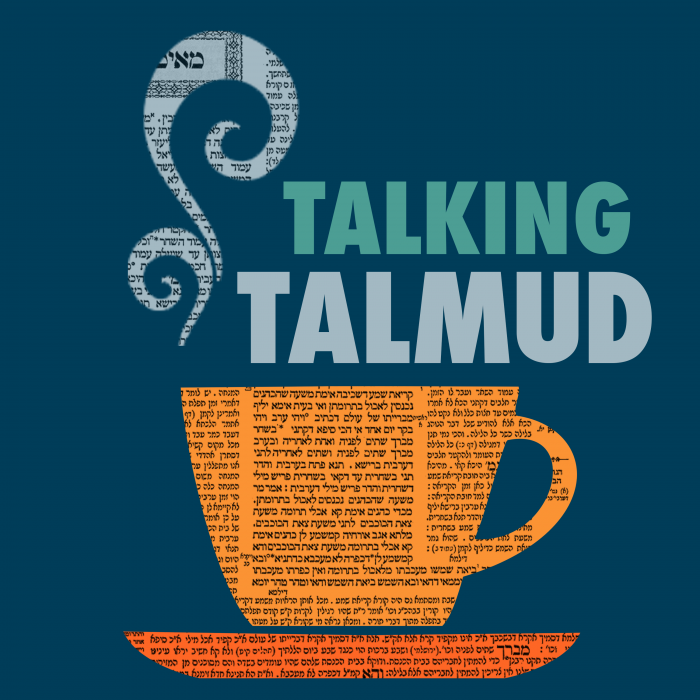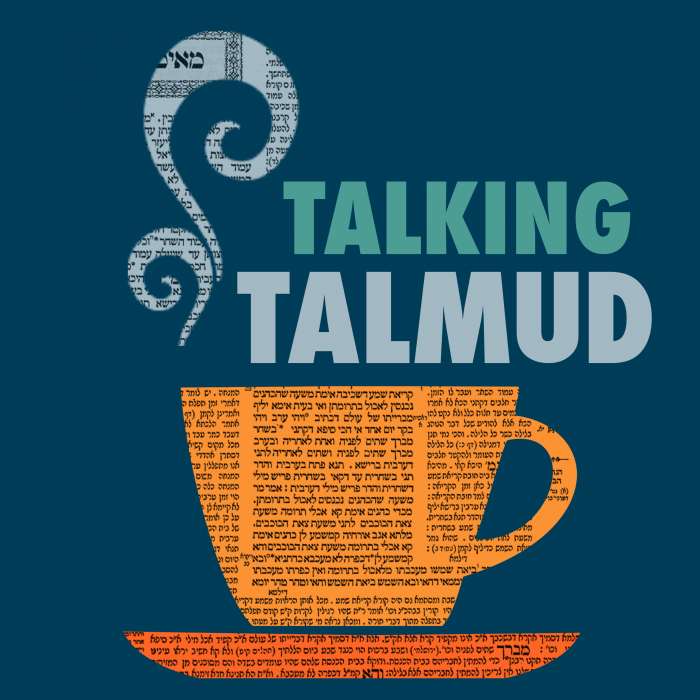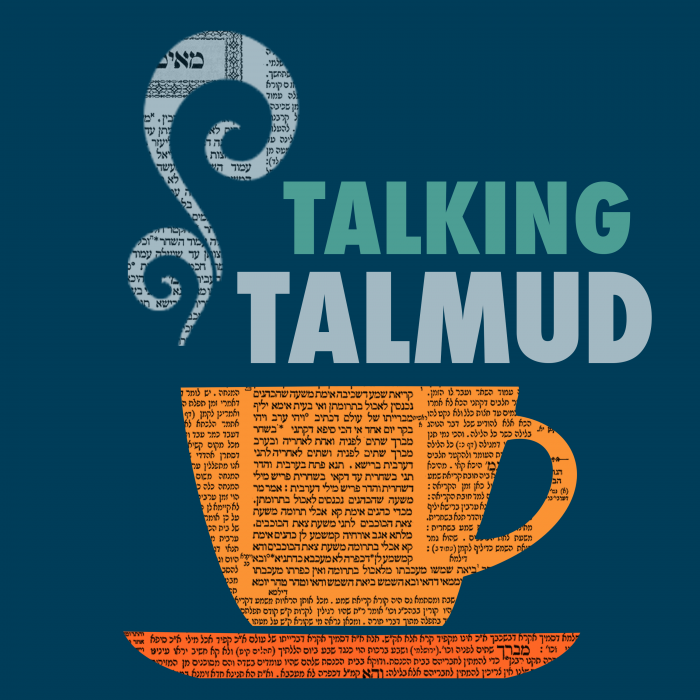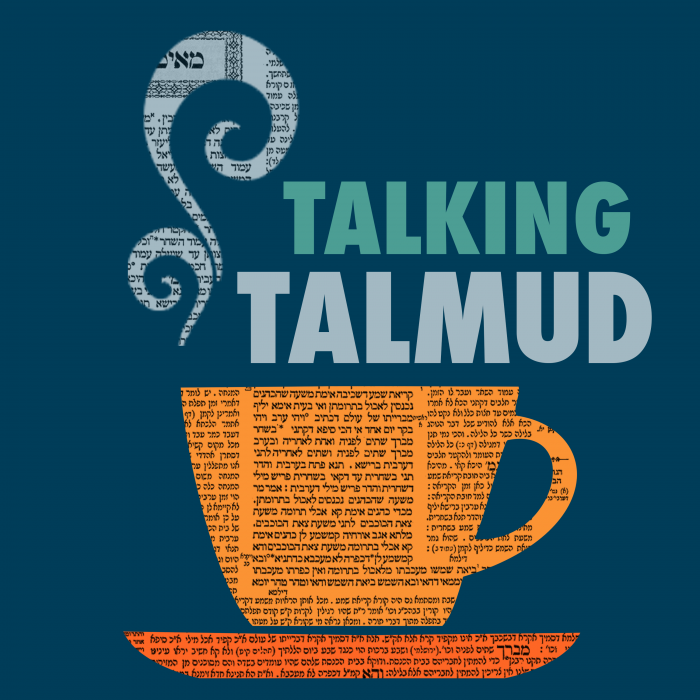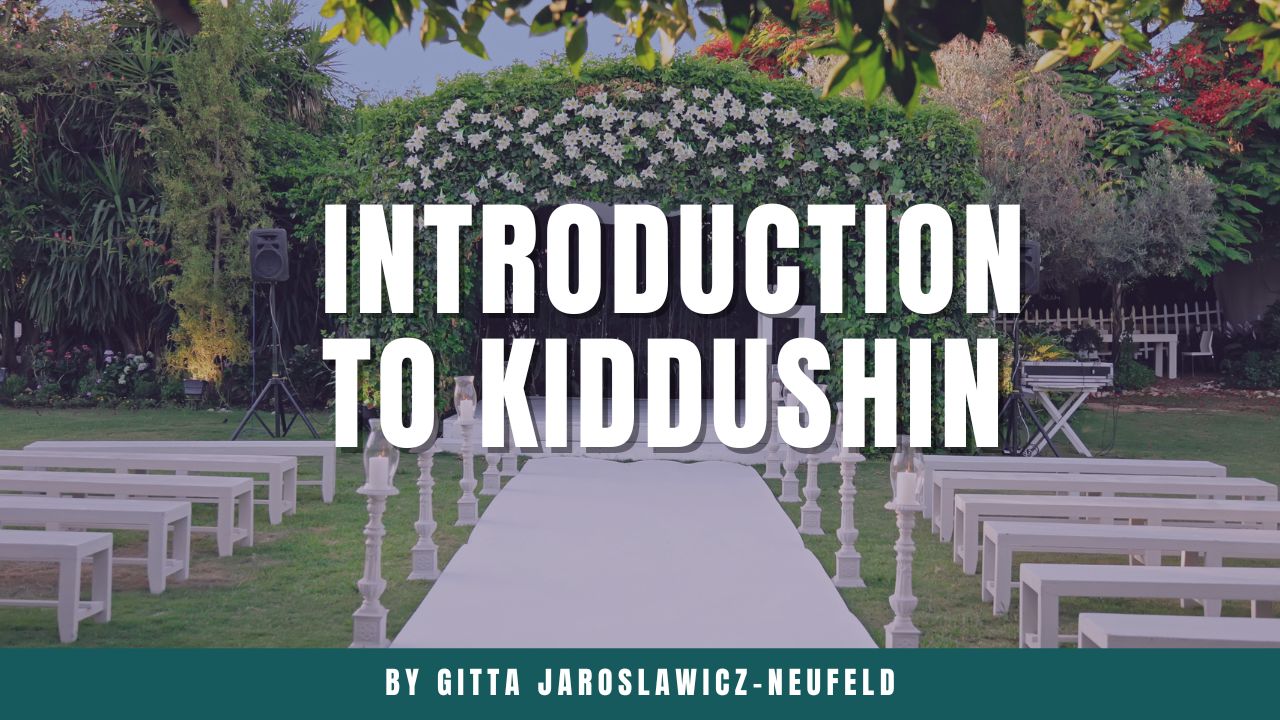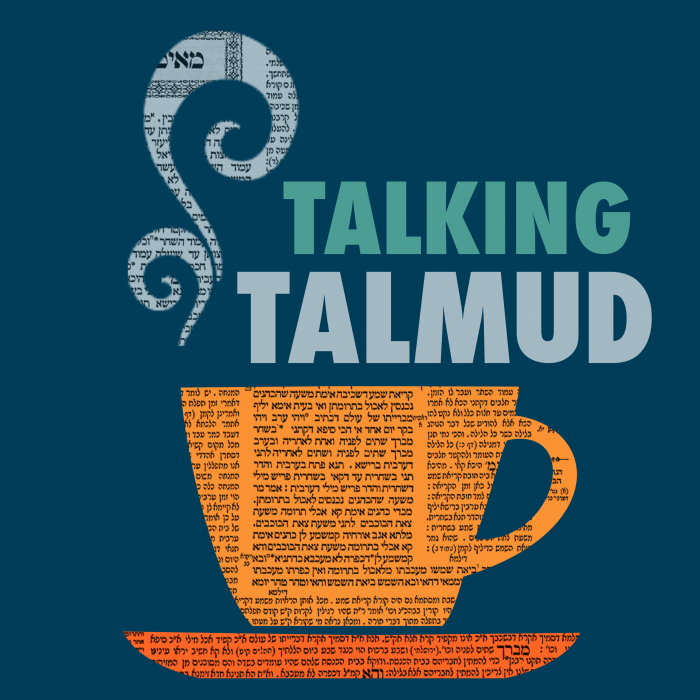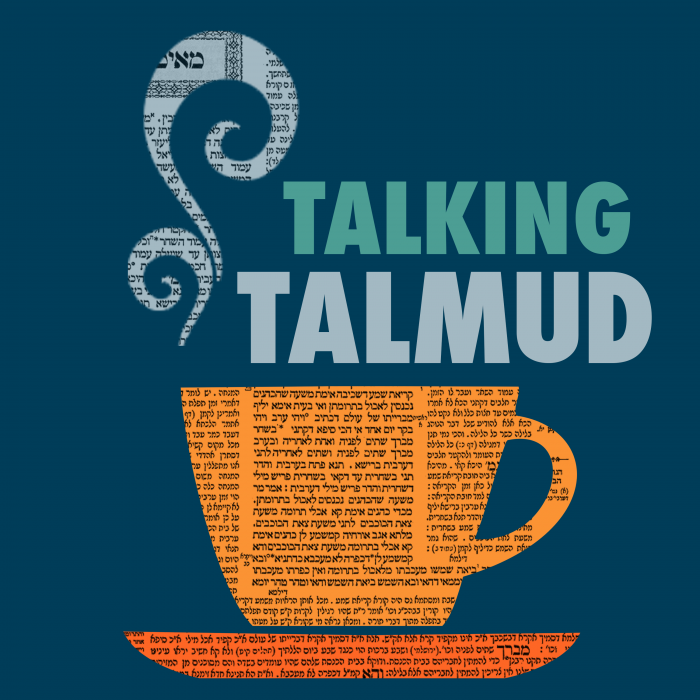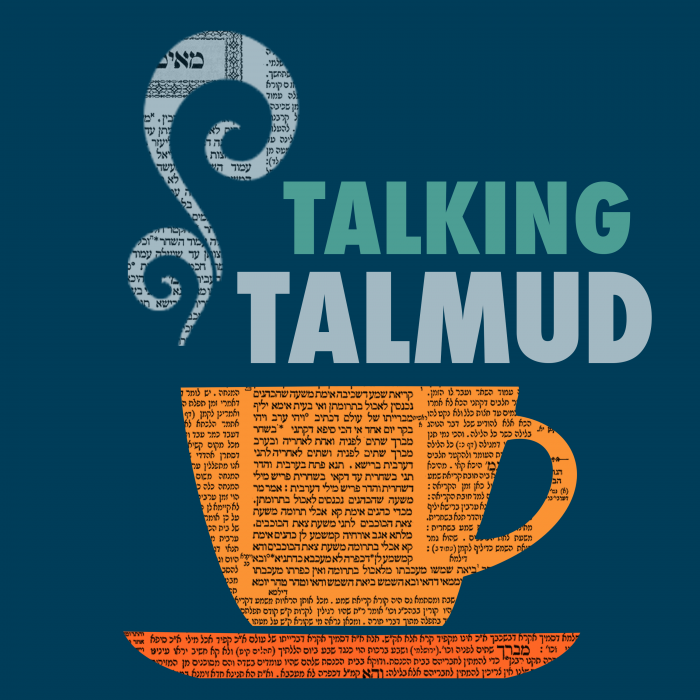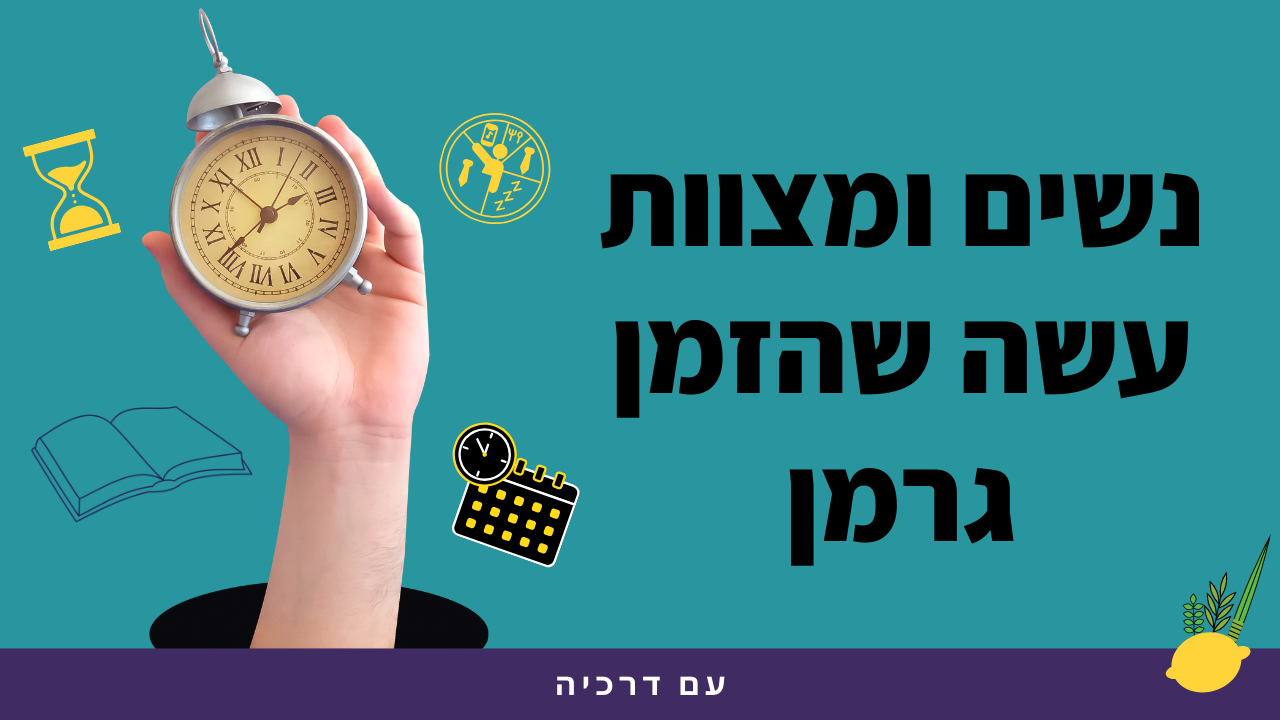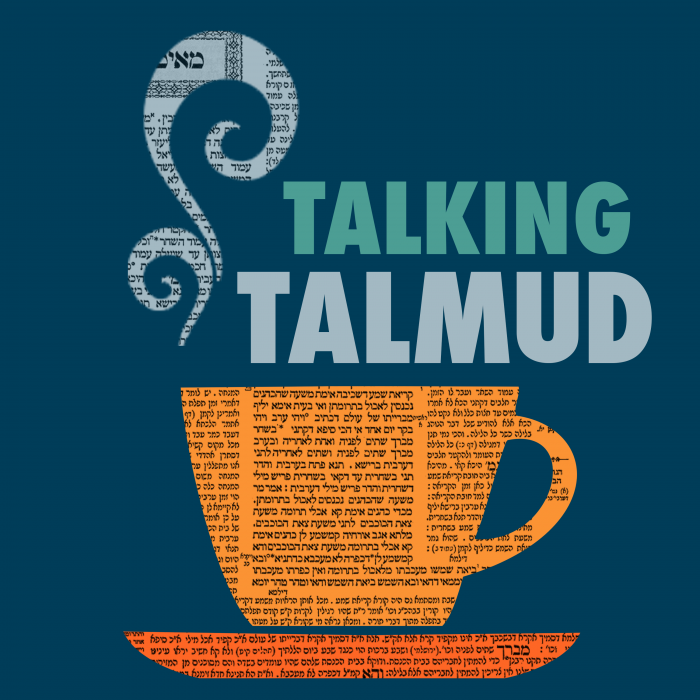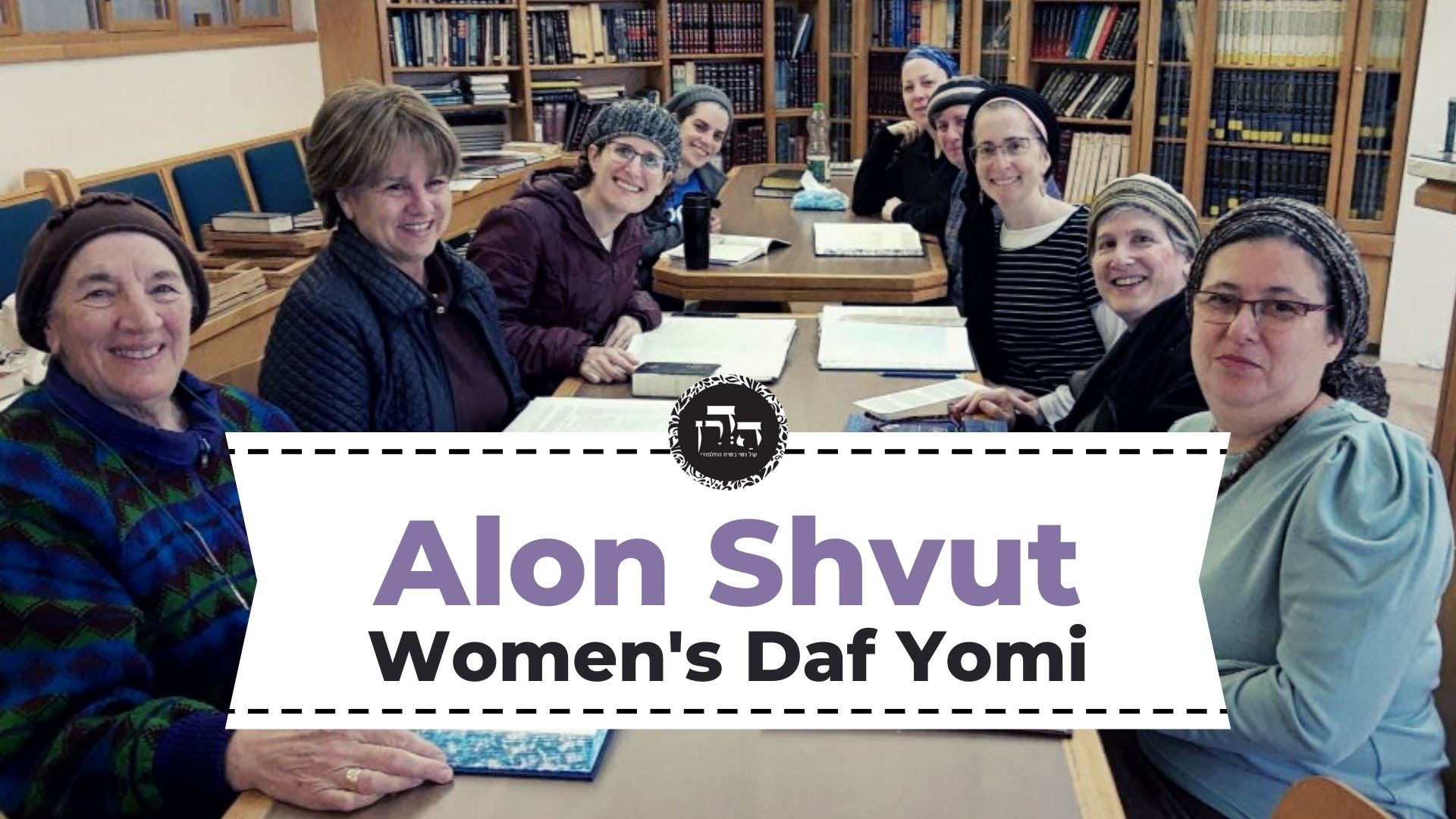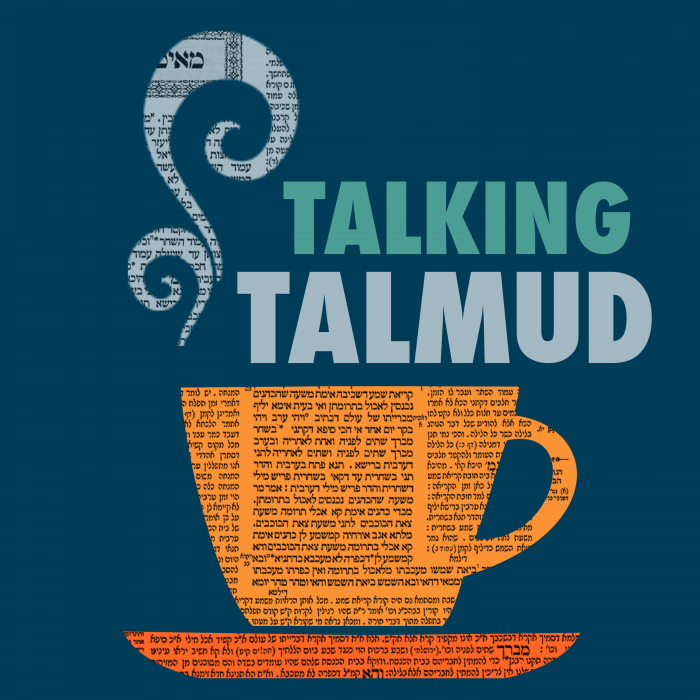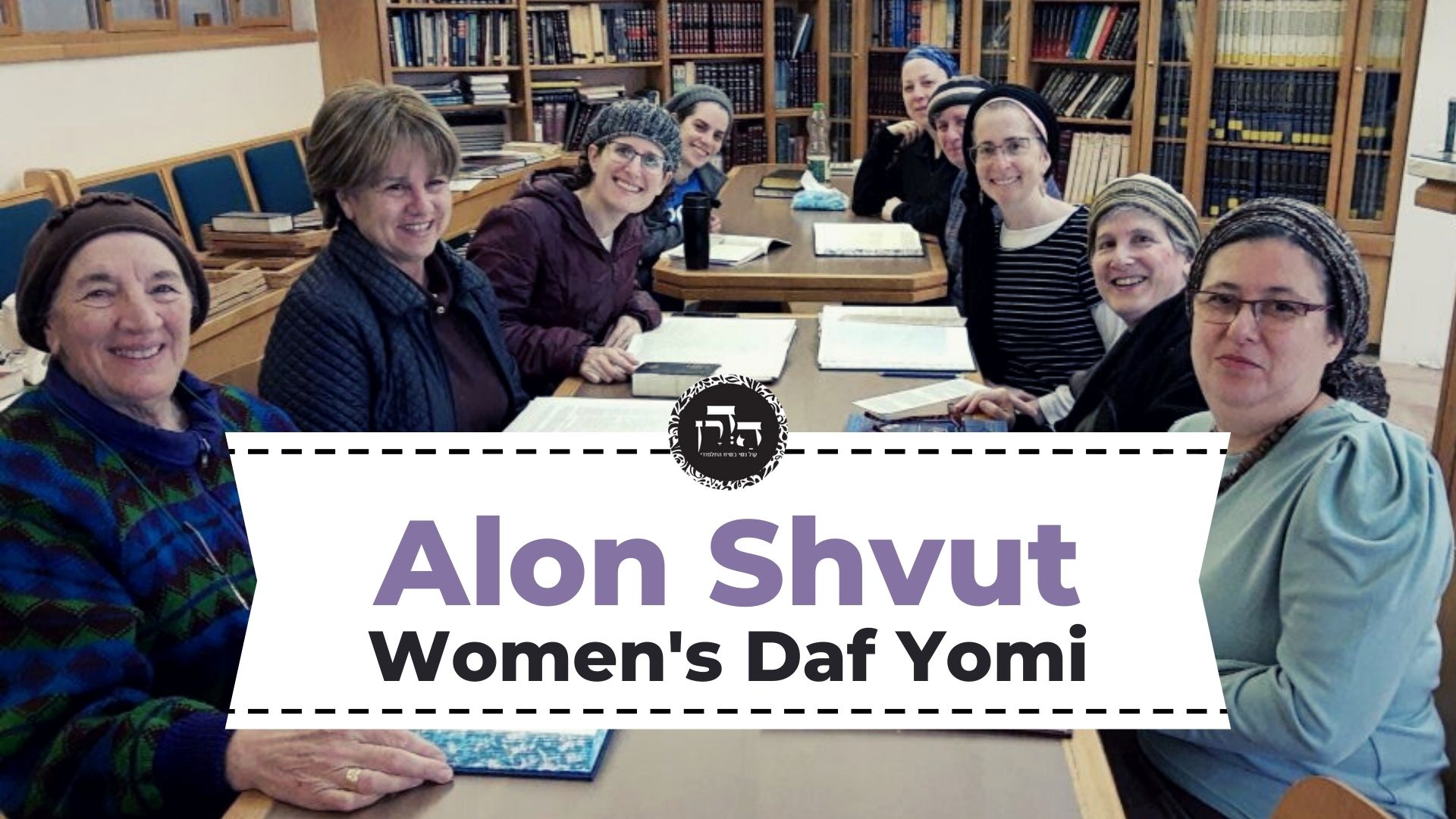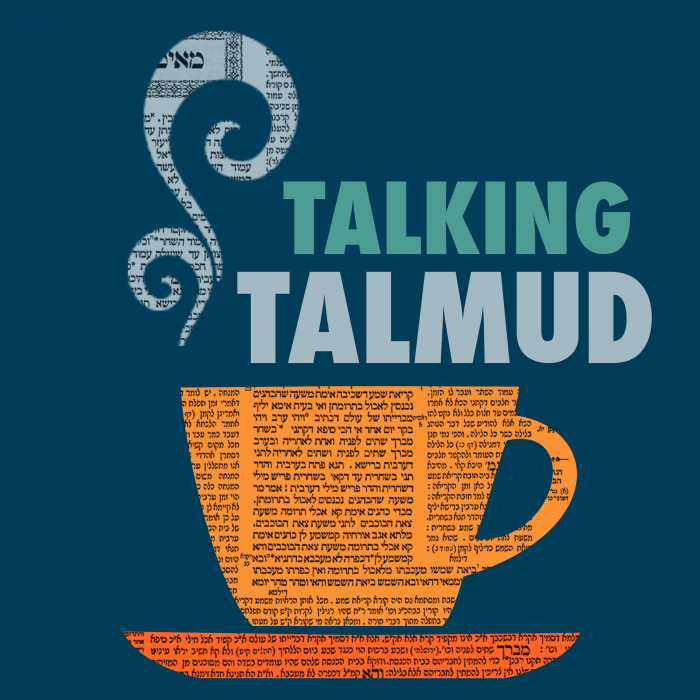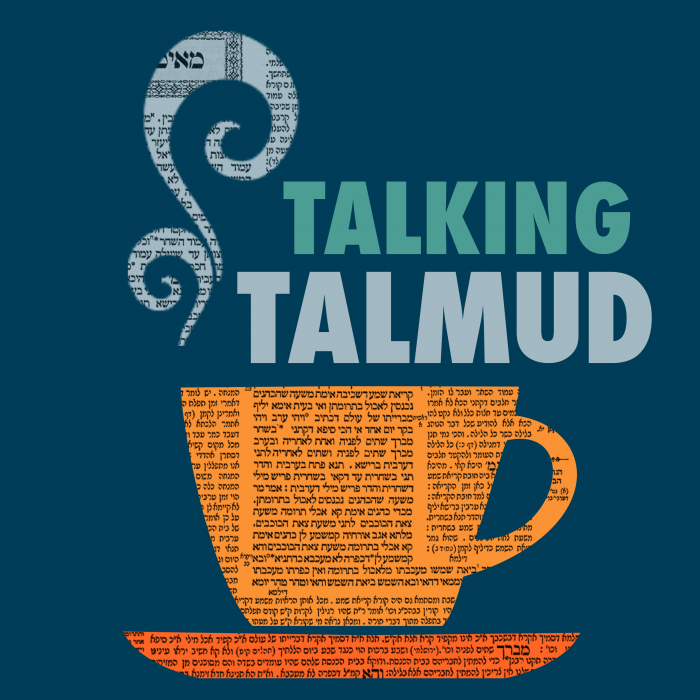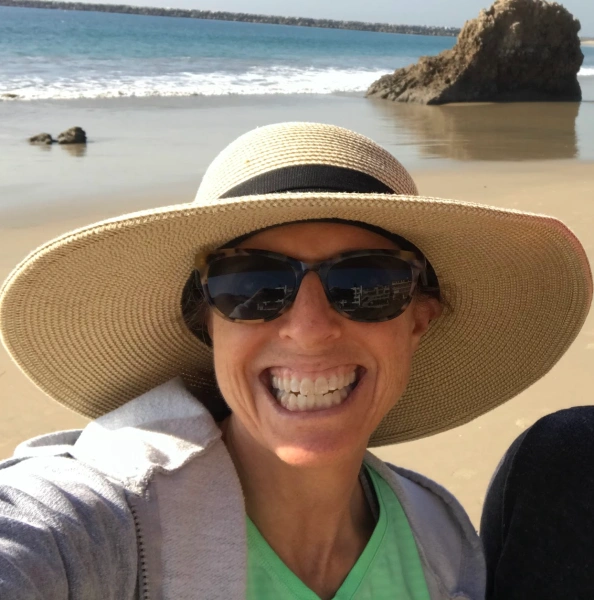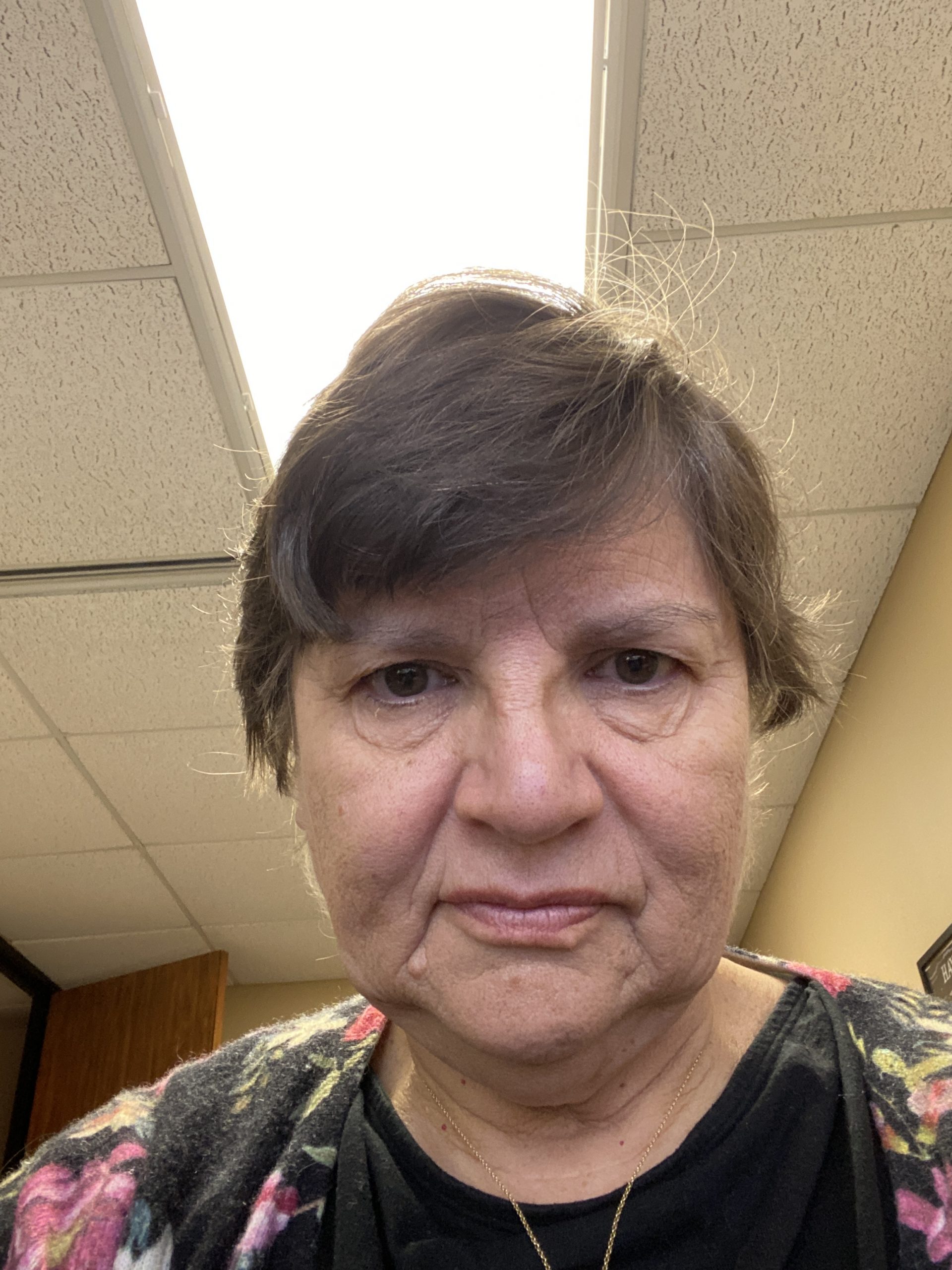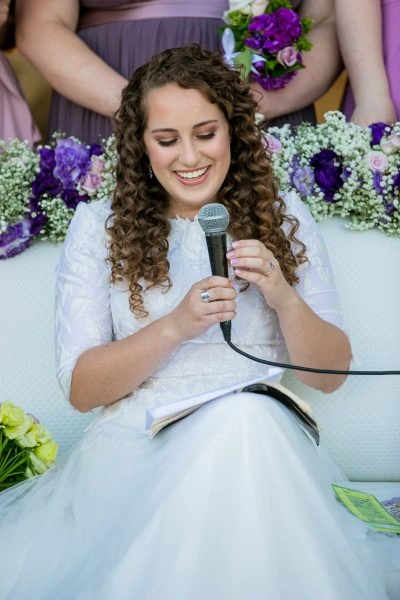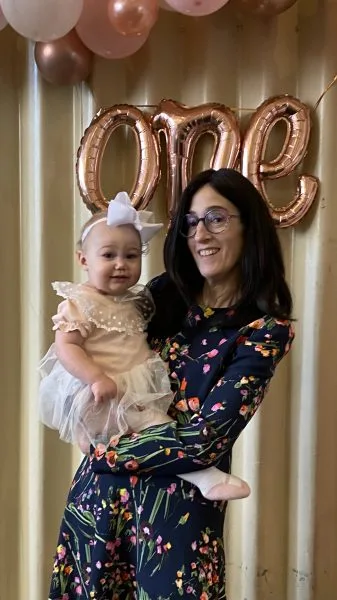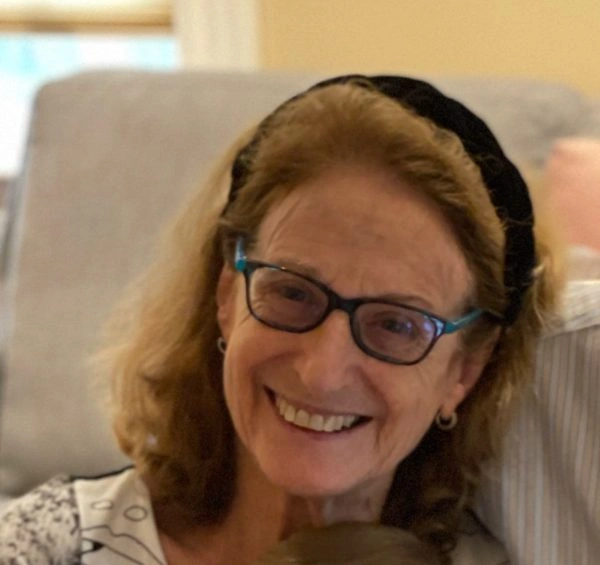Various situations in which a replacement offering is brought (the animal got lost and another was brought in its place and in the meantime the first animal was found), or the offspring of an animal designated for a toda or a tmura, would one bring bread with it or not? Does it depend on whether it was a voluntary or obligatory toda?
This week’s learning is sponsored by Robert and Paula Cohen in loving memory of Joseph Cohen, Yosef ben Moshe HaCohen, z”l. “He was hard working, loved to sing, esp. as a chazan, and was very dedicated to his family and community.”
Want to dedicate learning? Get started here:

Today’s daily daf tools:
This week’s learning is sponsored by Robert and Paula Cohen in loving memory of Joseph Cohen, Yosef ben Moshe HaCohen, z”l. “He was hard working, loved to sing, esp. as a chazan, and was very dedicated to his family and community.”
Today’s daily daf tools:
Delve Deeper
Broaden your understanding of the topics on this daf with classes and podcasts from top women Talmud scholars.
New to Talmud?
Check out our resources designed to help you navigate a page of Talmud – and study at the pace, level and style that fits you.
The Hadran Women’s Tapestry
Meet the diverse women learning Gemara at Hadran and hear their stories.
Menachot 80
אֶלָּא אַחֲלִיפֵי תּוֹדָה נְדָבָה, בֵּין לִפְנֵי כַפָּרָה בֵּין לְאַחַר כַּפָּרָה טְעוּנוֹת לֶחֶם – מַרְבֶּה בְּתוֹדוֹת הוּא!
Rather, perhaps Rabbi Yoḥanan was referring not to the replacement for an obligatory thanks offering, but to the replacement for a voluntary thanks offering. This too is difficult, because whether the initial thanks offering was found before the owner achieved atonement with the replacement or after he achieved atonement, both offerings require loaves, as the owner is considered one who increases thanks offerings. That is, since he was not required to bring a replacement for the offering, if he brings another offering it is considered an additional voluntary offering, and a voluntary thanks offering requires loaves.
אֶלָּא, אַוְּלַד תּוֹדָה נְדָבָה – בֵּין לִפְנֵי כַפָּרָה בֵּין לְאַחַר כַּפָּרָה אֵין טְעוּנִין לֶחֶם, מוֹתַר דְּתוֹדָה הִיא! אֶלָּא, אַוְּלַד תּוֹדָה חוֹבָה – לִפְנֵי כַפָּרָה טָעוּן לֶחֶם, לְאַחַר כַּפָּרָה אֵין טָעוּן לֶחֶם.
Rather, perhaps Rabbi Yoḥanan was referring to the offspring of a voluntary thanks offering. This too is difficult, because whether the offspring was sacrificed before the owner achieved atonement with its mother or after he achieved atonement, offspring do not require loaves, as this is considered a leftover of the thanks offering, which does not require loaves. Rather, perhaps Rabbi Yoḥanan was referring to the offspring of an obligatory thanks offering. Rabbi Yoḥanan teaches that if the offspring was sacrificed before the owner achieved atonement, it requires loaves, but if it was sacrificed after he achieved atonement, it does not require loaves.
מַאי קָא מַשְׁמַע לַן, דְּקָסָבַר רַבִּי יוֹחָנָן: אָדָם מִתְכַּפֵּר בִּשְׁבַח הֶקְדֵּשׁ. הָוֵי בַּהּ נָמֵי אַבָּיֵי כִּי הַאי גַוְונָא.
The Gemara asks: According to this explanation, what is Rav Ḥanina teaching us by sending this letter? He teaches us that Rabbi Yoḥanan holds: A person achieves atonement with the enhancement of consecrated property, even though it is not the initial consecrated property. If one sacrifices the offspring of an obligatory thanks-offering before the thanks-offering itself, he achieves atonement with the offspring, even though it is an enhancement of the consecrated thanks-offering. Accordingly, if he offers it before its mother, it requires loaves. The Gemara notes: Abaye also discusses the letter sent by Rav Ḥanina in this way and reaches conclusions similar to those of Rav Amram.
אִיתְּמַר נָמֵי, אָמַר רַב יִצְחָק בַּר יוֹסֵף, אָמַר רַבִּי יוֹחָנָן: חִילּוּפֵי תוֹדָה נְדָבָה, בֵּין לִפְנֵי כַפָּרָה בֵּין לְאַחַר כַּפָּרָה – טְעוּנָה לֶחֶם, מַרְבֶּה בְּתוֹדוֹת הוּא. וְלַד תּוֹדָה נְדָבָה, בֵּין לִפְנֵי כַפָּרָה בֵּין לְאַחַר כַּפָּרָה – אֵין טָעוּן לֶחֶם, מוֹתַר דְּתוֹדָה הוּא. וְולַד תּוֹדָה חוֹבָה, לִפְנֵי כַפָּרָה – טְעוּנִין לֶחֶם, לְאַחַר כַּפָּרָה – אֵין טְעוּנִין לֶחֶם.
With regard to the conclusions of Rav Amram and Abaye, it was also stated: Rav Yitzḥak bar Yosef says that Rabbi Yoḥanan says: If one achieves atonement with the replacement for a voluntary thanks offering, whether the thanks offering was found before he achieved atonement or after he achieved atonement, the replacement requires loaves, as the owner is considered one who increases thanks offerings. The offspring of a voluntary thanks offering, whether it was sacrificed before he achieved atonement or after he achieved atonement, does not require loaves, as offspring is considered a leftover of the thanks offering. And with regard to the offspring of an obligatory thanks offering, if it was sacrificed before he achieved atonement, it requires loaves, but if it was sacrificed after he achieved atonement, it does not require loaves.
אָמַר שְׁמוּאֵל: כֹּל שֶׁבְּחַטָּאת מֵתָה – בְּתוֹדָה אֵין טְעוּנָה לֶחֶם, כֹּל שֶׁבְּחַטָּאת רוֹעָה – בַּתּוֹדָה טְעוּנָה לֶחֶם.
§ The Gemara cites additional halakhot with regard to the loaves of a thanks offering that was lost and another animal was taken as its replacement: Shmuel says: In any situation in which a sin offering would be placed in isolation for it to die, if that same situation occurs with a thanks offering, it does not require loaves. And in any situation in which a sin offering would be placed in the field to graze until it develops a blemish, if that same situation occurs with a thanks offering, it requires loaves.
מֵתִיב רַב עַמְרָם: מַהוּ אוֹמֵר ״הַתּוֹדָה יַקְרִיב״? מִנַּיִן לְמַפְרִישׁ תּוֹדָתוֹ וְאָבְדָה, וְהִפְרִישׁ אַחֶרֶת תַּחְתֶּיהָ, וְנִמְצֵאת הָרִאשׁוֹנָה, וַהֲרֵי שְׁתֵּיהֶן עוֹמְדוֹת – מִנַּיִן שֶׁאֵיזוֹ מֵהֶן שֶׁיִּרְצֶה יַקְרִיב וְלַחְמָהּ עִמָּהּ? תַּלְמוּד לוֹמַר ״הַתּוֹדָה יַקְרִיב״. יָכוֹל תְּהֵא שְׁנִיָּה טְעוּנָה לֶחֶם? תַּלְמוּד לוֹמַר ״יַקְרִיבֶנּוּ״ – אֶחָד וְלֹא שְׁנַיִם.
Rav Amram raises an objection from the baraita cited on 79b: What is it that the verse teaches when it states: He sacrifices for a thanks offering? From where is it derived that one who separated an animal as his thanks offering and it was lost and he separated another in its stead, and the first animal was then found, and now they both stand fit to be sacrificed, from where is it derived that he may sacrifice whichever one of them he wishes, and its loaves are brought along with it? The verse states: He sacrifices for a thanks offering. One might have thought that the second animal also requires loaves to be brought with it. The verse states: “He sacrifices it,” indicating that only one thanks offering requires loaves, but not two.
וְאִילּוּ גַּבֵּי חַטָּאת כִּי הַאי גַּוְנָא רוֹעָה, דִּתְנַן: הִפְרִישׁ חַטָּאתוֹ וְאָבְדָה, וְהִפְרִישׁ אַחֶרֶת תַּחְתֶּיהָ, וְנִמְצֵאת הָרִאשׁוֹנָה, וַהֲרֵי שְׁתֵּיהֶן עוֹמְדוֹת – מִתְכַּפֵּר בְּאַחַת מֵהֶן וּשְׁנִיָּה תָּמוּת, דִּבְרֵי רַבִּי. וַחֲכָמִים אוֹמְרִים: אֵין חַטָּאת מֵתָה אֶלָּא שֶׁנִּמְצֵאת לְאַחַר שֶׁנִּתְכַּפְּרוּ בְּעָלִים, הָא קוֹדֶם שֶׁנִּתְכַּפְּרוּ בְּעָלִים – רוֹעָה.
Rav Amram continues: Whereas with regard to a sin offering in a case like this, the Rabbis hold that the animal is placed in the field to graze, as we learned in a mishna (Temura 22b): If one separated his sin offering and it was lost, and he separated another animal in its stead, and the first sin offering was found, and both animals stand fit for sacrifice, then he achieves atonement with one of them and the second animal shall be left to die; this is the statement of Rabbi Yehuda HaNasi. And the Rabbis say: A sin offering is left to die only if it was found after its owner achieved atonement. It may be inferred from the opinion of the Rabbis that if it is found before the owner achieved atonement, it is placed in the field to graze.
שְׁמוּאֵל כְּרַבִּי סְבִירָא לֵיהּ, דְּאָמַר: אֲבוּדָה בִּשְׁעַת הַפְרָשָׁה – מֵתָה.
The Gemara responds: Shmuel holds in accordance with the opinion of Rabbi Yehuda HaNasi, who said: An animal separated as a sin offering that was lost at the time of the separation of its replacement, even if it was found before the replacement was sacrificed, is left to die. The principle stated by Shmuel is therefore correct, since in every situation in which a sin offering is left to die, a thanks offering does not require loaves.
אֶלָּא רוֹעָה, לְרַבִּי הֵיכִי מַשְׁכַּחַתְּ לַהּ? כִּדְרַבִּי אוֹשַׁעְיָא, דְּאָמַר רַבִּי אוֹשַׁעְיָא: הִפְרִישׁ שְׁתֵּי חַטָּאוֹת לְאַחְרָיוּת, מִתְכַּפֵּר בְּאֵיזֶה מֵהֶן שֶׁיִּרְצֶה, וְהַשְּׁנִיָּה תִּרְעֶה.
The Gemara asks: But if Rabbi Yehuda HaNasi holds that even in such a case the second sin offering is left to die, how can you find a case where the sin offering is placed in the field to graze according to the opinion of Rabbi Yehuda HaNasi? The Gemara responds: It can be found in a case like that of Rabbi Oshaya, as Rabbi Oshaya says: If one separated two sin offerings, one to achieve atonement for his sin and the other as a guarantee in case the first one is lost, he may achieve atonement with whichever of them he wishes, and the second shall be placed in the field to graze.
וְהָא גַּבֵּי תוֹדָה כִּי הַאי גַוְונָא אֵין טְעוּנָה לֶחֶם, אֶלָּא שְׁמוּאֵל כְּרַבִּי שִׁמְעוֹן סְבִירָא לֵיהּ, דְּאָמַר: חָמֵשׁ חַטָּאוֹת מֵתוֹת.
The Gemara challenges: But in a case like this involving a thanks offering, the animal does not require loaves. Therefore, if Rabbi Yehuda HaNasi holds that in such a case the sin offering is placed in the field to graze, then Shmuel cannot hold in accordance with his opinion, since according to Shmuel, in circumstances where a sin offering would be left to graze, a thanks offering in the same circumstances would require loaves. Rather, Shmuel holds in accordance with the opinion of Rabbi Shimon, who said: There are five sin offerings that are left to die; one is a sin offering that was lost and found before its replacement was sacrificed, and another is the case where a sin offering was separated as a guarantee.
וְהָא רוֹעָה, לְרַבִּי שִׁמְעוֹן לֵית לֵיהּ כְּלָל.
The Gemara challenges: But it cannot be that Shmuel holds in accordance with the opinion of Rabbi Shimon, since Rabbi Shimon does not hold that there are any circumstances in which a sin offering is placed in the field to graze. Accordingly, if Shmuel holds in accordance with the opinion of Rabbi Shimon, how can he say: And in any situation in which a sin offering would be placed in the field to graze until it develops a blemish, if that same situation occurs with a thanks offering, it requires loaves?
שְׁמוּאֵל נָמֵי חֲדָא קָאָמַר: כֹּל שֶׁבְּחַטָּאת מֵתָה – בְּתוֹדָה אֵין טְעוּנָה לֶחֶם. מַאי קָא מַשְׁמַע לַן? לְאַפּוֹקֵי מִדְּרַבִּי יוֹחָנָן, דְּאָמַר: אָדָם מִתְכַּפֵּר בִּשְׁבַח הֶקְדֵּשׁ, קָמַשְׁמַע לַן דְּלָא.
The Gemara responds: In fact, Shmuel also stated only one principle: In any situation in which a sin offering is placed in isolation for it to die, if that same situation occurs with a thanks offering, it does not require loaves. He did not state the second principle. The Gemara asks: What is Shmuel teaching us? The Gemara responds: Shmuel teaches us his statement to exclude the statement of Rabbi Yoḥanan, who said: A person achieves atonement with the enhancement of consecrated property. According to Rabbi Yoḥanan, the offspring of an obligatory thanks offering requires loaves if it is sacrificed before its mother. Shmuel teaches us that one does not achieve atonement with the enhancement of consecrated property, and the offspring of a thanks offering does not require loaves, which corresponds to the fact that the offspring of a sin offering is left to die.
אָמַר רַבִּי אַבָּא: זוֹ תּוֹדָה וְזוֹ לַחְמָהּ, אָבַד הַלֶּחֶם – מֵבִיא לֶחֶם אַחֵר, אָבְדָה תּוֹדָה – אֵינוֹ מֵבִיא תּוֹדָה אַחֶרֶת. מַאי טַעְמָא? לֶחֶם לִגְלַל תּוֹדָה, וְאֵין תּוֹדָה לִגְלַל לֶחֶם.
§ With regard to the loaves of a thanks offering, Rabbi Abba says: If one volunteered to bring a thanks offering, and said: This animal is a thanks offering and this flour is designated for its loaves, then if the loaves were lost, he brings other loaves. If the thanks offering was lost, he does not bring another thanks offering, and the loaves are not sacrificed. What is the reason for this? The loaves are brought on account of the thanks offering; therefore, if there is no thanks offering, there are no loaves. But the thanks offering is not brought on account of the loaves; consequently, if the loaves were lost, the thanks offering is still sacrificed, and one brings different loaves.
וְאָמַר רָבָא: הִפְרִישׁ מָעוֹת לְתוֹדָתוֹ
§ And with regard to the distinctions between a thanks offering and its accompanying loaves, Rava says: In the case of one who separated money for his thanks offering
וְנִתּוֹתְרוּ – מֵבִיא בָּהֶן לֶחֶם. לְלַחְמֵי תוֹדָה וְנִתּוֹתְרוּ – אֵין מֵבִיא בָּהֶן תּוֹדָה.
and some of the money remained after he purchased the offering, he brings, i.e., purchases, with the remaining money loaves to accompany the thanks offering. If he separated money for the loaves of the thanks offering and some of the money remained after he purchased the loaves, he may not bring a thanks offering with the remaining money.
מַאי טַעְמָא? אִילֵּימָא מִשּׁוּם דְּרַב כָּהֲנָא, דְּאָמַר רַב כָּהֲנָא: מִנַּיִן לְלַחְמֵי תוֹדָה שֶׁנִּקְרְאוּ ״תּוֹדָה״? שֶׁנֶּאֱמַר: ״וְהִקְרִיב עַל זֶבַח הַתּוֹדָה חַלּוֹת מַצּוֹת״. אִי הָכִי, אִיפְּכָא נָמֵי! לֶחֶם אִיקְּרִי ״תּוֹדָה״, תּוֹדָה לָא אִיקְּרַי ״לֶחֶם״.
The Gemara asks: What is the reason? If we say that it is due to the statement of Rav Kahana, that is difficult. As Rav Kahana said: From where is it derived that the loaves of a thanks offering are themselves called a thanks offering? It is derived from that which is stated in the verse: “Then he shall offer with the sacrifice of thanks offering loaves” (Leviticus 7:12). The juxtaposition of the words “thanks offering” and “loaves” indicates that the loaves are themselves called a thanks offering. Therefore, one who separated money for a thanks offering may use that money for the loaves as well. The Gemara explains the difficulty: If that is so, the opposite should also be the halakha, i.e., the thanks offering is called loaves, and it should therefore be permitted to use the money remaining from the loaves for the thanks offering. The Gemara rejects this: The loaves are called a thanks offering, but the thanks offering is not called loaves.
וְאָמַר רָבָא: הִפְרִישׁ תּוֹדָתוֹ וְאָבְדָה, וְחָזַר וְהִפְרִישׁ אַחֶרֶת תַּחְתֶּיהָ, וְאָבְדָה, וְחָזַר וְהִפְרִישׁ אַחֶרֶת תַּחְתֶּיהָ, וְנִמְצְאוּ הָרִאשׁוֹנוֹת, וַהֲרֵי שְׁלׇשְׁתָּן עוֹמְדוֹת. נִתְכַּפֵּר בָּרִאשׁוֹנָה – שְׁנִיָּה אֵינָהּ טְעוּנָה לֶחֶם, שְׁלִישִׁית טְעוּנָה לֶחֶם.
§ And Rava says: If one separated an animal as his thanks offering and it was lost, and he again separated another in its stead, and it too was lost, and he again separated another in its stead, and the first two animals were then found, and the three of them stand fit to be sacrificed, the halakha is as follows: If he achieved atonement with the first animal, the second does not require loaves, as it is the replacement for the first, and the first was sacrificed with its loaves. But the third requires loaves, because it is the replacement for the second, which does not require loaves.
נִתְכַּפֵּר בַּשְּׁלִישִׁית – שְׁנִיָּה אֵינָהּ טְעוּנָה לֶחֶם, רִאשׁוֹנָה טְעוּנָה לֶחֶם; בָּאֶמְצָעִית – שְׁתֵּיהֶן אֵין טְעוּנוֹת לֶחֶם; אַבָּיֵי אָמַר: אֲפִילּוּ נִתְכַּפֵּר בְּאַחַת מֵהֶן – שְׁתֵּיהֶן אֵין טְעוּנוֹת לֶחֶם, כּוּלְּהוּ חֲלִיפִין דַּהֲדָדֵי נִינְהוּ.
If he achieved atonement with the third, then the second does not require loaves, because its replacement, i.e., the third, was sacrificed with loaves, but the first requires loaves, because its replacement, i.e., the second, will be sacrificed without loaves. If he achieved atonement with the middle, i.e., the second animal, both of them, i.e., the first and the third, do not require loaves, because the replacement for the first, i.e., the second, was sacrificed with loaves, and the third is the replacement for the second, which was sacrificed with loaves. Abaye says: Even if he achieved atonement with any one of them, the other two do not require loaves, as they are all replacements for one another.
אָמַר רַבִּי זֵירָא: וְכֵן לְעִנְיַן חַטָּאוֹת, הִפְרִישׁ חַטָּאתוֹ וְאָבְדָה, וְהִפְרִישׁ אַחֶרֶת תַּחְתֶּיהָ וְאָבְדָה, וְהִפְרִישׁ אַחֶרֶת תַּחְתֶּיהָ, וְנִמְצְאוּ הָרִאשׁוֹנוֹת, וַהֲרֵי שְׁלׇשְׁתָּן עוֹמְדוֹת. נִתְכַּפֵּר בָּרִאשׁוֹנָה – שְׁנִיָּה תָּמוּת, שְׁלִישִׁית תִּרְעֶה.
Rabbi Zeira says: And so is the halakha for the matter of sin offerings: If one separated an animal as his sin offering and it was lost, and he separated another in its stead, and it too was lost, and he separated another in its stead, and the first two animals were then found, and the three of them stand fit to be sacrificed, the halakha is as follows: If he achieved atonement with the first, the second is left to die, as is the halakha with regard to a sin offering whose owner has already achieved atonement, and the third is placed in the field to graze until it develops a blemish and can be redeemed, since it is the replacement for a sin offering that was not sacrificed.
נִתְכַּפֵּר בַּשְּׁלִישִׁית – שְׁנִיָּה תָּמוּת, וְרִאשׁוֹנָה תִּרְעֶה. נִתְכַּפֵּר בָּאֶמְצָעִית – שְׁתֵּיהֶן יָמוּתוּ. אַבָּיֵי אָמַר: אֲפִילּוּ נִתְכַּפֵּר בְּאַחַת מֵהֶן – שְׁתֵּיהֶן יָמוּתוּ, כּוּלְּהוּ חֲלִיפִין דַּהֲדָדֵי נִינְהוּ.
If he achieved atonement with the third, the second is left to die, because its replacement, i.e., the third, was already sacrificed, and the first is placed in the field to graze, because its replacement, i.e., the second, will not be sacrificed. If he achieved atonement with the middle, both of them, i.e., the first and the third, are left to die, because the second was sacrificed as a replacement for the first, and the third would have been the replacement of the second. Abaye says: Even if he achieved atonement with any one of them, the other two are left to die, as they are all replacements for one another.
מַאי ״וְכֵן״? מַהוּ דְּתֵימָא: הָתָם הוּא דְּאִיכָּא לְמֵימַר ״מַרְבֶּה בְּתוֹדוֹת הוּא״, אֲבָל הָכָא, דְּלֵיכָּא לְמֵימַר ״מַרְבֶּה בְּחַטָּאוֹת הוּא״, אֵימָא לָא. קָא מַשְׁמַע לַן.
The Gemara asks: What does Rabbi Zeira mean by: And so is the halakha for the matter of sin offerings? Why is it necessary for Rabbi Zeira to teach this seemingly identical halakha with regard to three sin offerings? The Gemara responds: It is necessary to teach that these halakhot apply with regard to sin offerings as well, lest you say that there, in the case of the thanks offerings, if one achieved atonement with the first animal then the third requires loaves, since it can be said that the owner is one who increases thanks offerings; but here, in the case of the sin offerings, since it cannot be said that the owner is one who increases sin offerings, as one cannot volunteer a sin offering, I would say that the same halakhot do not apply, and if one achieved atonement with the first sin offering, the third is left to die. Rabbi Zeira therefore teaches us that the third sin offering is considered the replacement for the second and is therefore left to graze.
תָּנֵי רַבִּי חִיָּיא: תּוֹדָה שֶׁנִּתְעָרְבָה בִּתְמוּרָתָהּ, וּמֵתָה אַחַת מֵהֶן – חֲבֶירְתָּהּ אֵין לָהּ תַּקָּנָה. הֵיכִי נַעֲבֵיד? נַקְרֵיב לֶחֶם בַּהֲדַהּ – דִּלְמָא תְּמוּרָה הִיא, לָא נַקְרֵיב לֶחֶם בַּהֲדַהּ – דִּלְמָא תּוֹדָה הִיא.
§ The mishna teaches that the substitute of a thanks offering does not require loaves. Rabbi Ḥiyya teaches: In the case of an animal separated as a thanks offering that was intermingled with its substitute, and it is not known which is the thanks offering and which is the substitute, and one of them died, the other has no remedy. What should we do? If we bring loaves with it, this may be improper, because perhaps it is a substitute, which does not require loaves. If we do not bring loaves with it, this may be improper, because perhaps it is the actual thanks offering, which requires loaves.
הֵיכִי דָמֵי? אִי דְּאָמַר ״עָלַי״, לָא סַגִּיא דְּלָא מַיְיתֵי לֵיהּ בְּהֵמָה אַחֲרִינָא וְלֶחֶם, וְלֵימָא: אִי הָךְ דְּקָיְימָא תְּמוּרָה הִיא – הָא תּוֹדָה וְהָא לַחְמָהּ, אִי הָךְ דְּקָיְימָא תּוֹדָה הִיא – הָא לַחְמָהּ וְהָא תֶּיהְוֵי אַחְרָיוּת!
The Gemara asks: What are the circumstances of this case? If it is a case where the owner said: It is incumbent upon me to bring a thanks offering, in which case he is required to replace the thanks offering in the event of its loss, then why is there no remedy? Is it not sufficient if he does not bring another animal and loaves, and says: If the one remaining from the intermingled group is the substitute, then let this additional animal be the thanks offering and these its loaves; and if the one remaining is the thanks offering, then let it be the thanks offering and these its loaves, and let this additional animal be its guarantee, which does not require loaves?
לָא צְרִיכָא, דְּאָמַר ״הֲרֵי זוֹ״.
The Gemara responds: No, the statement of Rabbi Ḥiyya is necessary in a case in which one said: This animal is a thanks offering. Since he consecrated a specific animal as a thanks offering, he is not required to provide a guarantee in the event of its loss, and the above remedy is not applicable.
(סִימָן: לְמוּדִים, מִידַּת, עִלָּה, שֶׁיֵּשׁ, שֶׁכֵּן, דְּדָמָהּ, דְּאִי, חֲלַשׁ, מוֹתַר, תְּמוּרָה, בַּחוּץ, חִזְקִיָּה, הִפְרִישׁ חַטָּאת, לְאַחַר יוֹתֵר).
§ The Gemara raises a series of challenges with the statement of Rabbi Ḥiyya that if a thanks offering was intermingled with its substitute and one of them died, there is no remedy for the other. The Gemara provides a mnemonic for remembering the names of the Sages that raise these challenges: Lemudim, i.e., Levi, who was known as Lemedin before Rabbi Yehuda HaNasi; middat, i.e., Rav Yitzḥak bar Shmuel bar Marta; ala, i.e., Ulla bar Abba; shish, i.e., Rav Shisha, son of Rav Idi; sheken, an acronym for Rav Ashi and Rav Kahana; dedamah, i.e., Rav Dimi, son of Rav Huna of Dimhorya; de’i, i.e., Ravina of Ikla. An additional mnemonic is provided for recalling the topics of these questions: Ḥalash, a contraction of ḥullin, i.e., non-sacred items, and shelamim, peace offerings; leftover; substitute; outside; Ḥizkiyya; separated a sin offering; for a guarantee.
אָמְרוּ לְמֵדִין לִפְנֵי רַבִּי: וְלַיְתֵי לֶחֶם, וְלֵימָא: אִי הָךְ דְּקָיְימָא תּוֹדָה הִיא – הָא לַחְמָהּ, אִי לָא – לִיפּוֹק לְחוּלִּין. אֲמַר לְהוּ: וְכִי מַכְנִיסִין חוּלִּין לָעֲזָרָה?
Lemedin, i.e., Levi, said before Rabbi Yehuda HaNasi: But why is there no remedy in this case? Let him bring loaves for the thanks offering and let him say: If this animal that is extant from the intermingled pair is the thanks offering, then these are its loaves, and they will be consumed as the loaves of the thanks offering. And if not, i.e., if the extant animal is the substitute, which is sacrificed without loaves, then let these loaves go out to be consumed as non-sacred loaves. Rabbi Yehuda HaNasi said to him: But the loaves of a thanks offering must be waved in the Temple courtyard, and do we intentionally bring non-sacred items into the Temple courtyard?
וְלַיְתֵי בְּהֵמָה וְלֶחֶם, וְלֵימָא: אִי הָךְ דְּקָיְימָא תְּמוּרָה הִיא – הָא תּוֹדָה וְהָא לַחְמָהּ, אִי הָךְ דְּקָיְימָא תּוֹדָה הִיא – הָא לַחְמָהּ וְהָא תִּיהְוֵי שְׁלָמִים! אֲמַר לְהוּ: מִשּׁוּם דְּקָא מְמַעֵט בַּאֲכִילָה דִּשְׁלָמִים.
Levi challenges: And let him bring another animal with loaves and let him say: If this animal that is extant is the substitute, then let this additional animal be the thanks offering and these its loaves. If this animal that is extant is the thanks offering, then let these be its loaves, and this additional animal should be a peace offering, which does not require loaves. Rabbi Yehuda HaNasi said to him: This cannot be done, because he thereby reduces the time period permitted for consuming the peace offering, which is generally two days and one night. A thanks offering may be consumed only on the day it is sacrificed and the following night.
אָמַר לֵוִי לְרַבִּי: וְלַיְתֵי בְּהֵמָה וְלֶחֶם, וְלֵימָא: אִי הָךְ דְּקָיְימָא תְּמוּרָה הִיא – הָא תּוֹדָה וְהָא לַחְמָהּ, וְאִי הַאי דְּקָיְימָא תּוֹדָה הִיא – הָא לַחְמָהּ וְהָא תֶּיהְוֵי מוֹתַר דְּתוֹדָה! אֲמַר לֵיהּ: כִּמְדוּמֶּה אֲנִי שֶׁאֵין לוֹ מוֹחַ בְּקׇדְקֳדוֹ,
Levi said to Rabbi Yehuda HaNasi: And let him bring another animal with loaves and let him say: If this animal that is extant is the substitute, then let this be the thanks offering and these its loaves. And if that animal that is extant is the thanks offering, then let these be its loaves and this will be the leftover of the thanks offering, which does not require loaves. Rabbi Yehuda HaNasi said to him: It seems to me that he has no brain in his skull.


